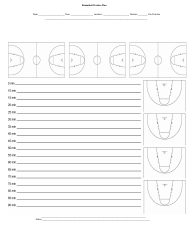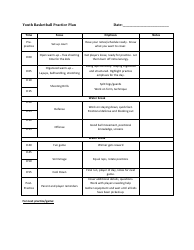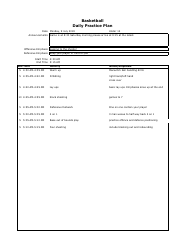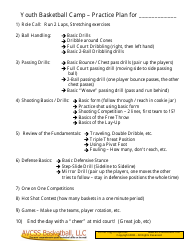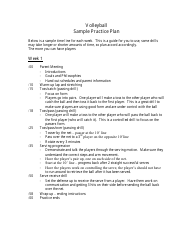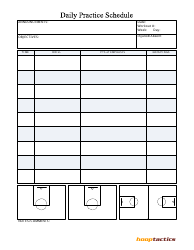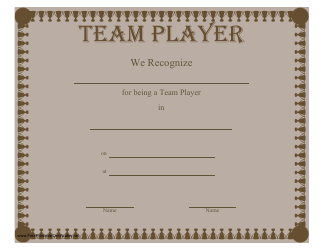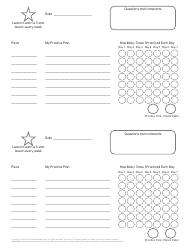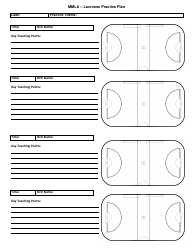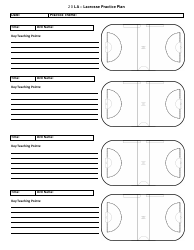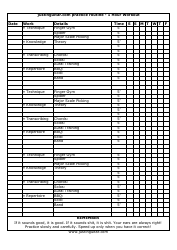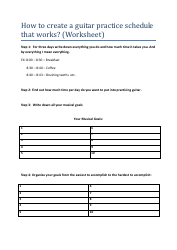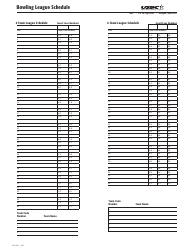Basketball Practice Plan - Hoopcoach
Basketball Practice Plan - Hoopcoach is used for creating structured practice plans for basketball teams. It provides coaches with a systematic approach to conducting effective training sessions, focusing on various aspects of the game such as skill development, strategy, conditioning, and teamwork.
FAQ
Q: What is a basketball practice plan?
A: A basketball practice plan is a structured outline of drills, exercises, and activities that coaches use to organize and lead a basketball practice session.
Q: Why is a practice plan important?
A: A practice plan helps coaches maximize their time, keep practices organized, and ensure that players are receiving a well-rounded training experience.
Q: What does a typical basketball practice plan include?
A: A typical basketball practice plan includes warm-up exercises, skill development drills, team drills, game simulations, and cool-down activities.
Q: How long should a basketball practice plan be?
A: The length of a basketball practice plan can vary depending on the coach's preferences and the age/level of the players. However, most practice plans range from 1.5 to 2 hours.
Q: What are some common warm-up exercises for basketball practices?
A: Common warm-up exercises for basketball practices include jogging, stretching, agility ladder drills, and shooting warm-ups.
Q: What types of skill development drills can be included in a practice plan?
A: Skill development drills can include shooting drills, dribbling drills, passing drills, defensive drills, and rebounding drills.
Q: How can coaches incorporate team drills into a practice plan?
A: Coaches can incorporate team drills by focusing on offensive plays, defensive strategies, game scenarios, and team-building exercises.
Q: What are some examples of game simulations for basketball practices?
A: Game simulations can include scrimmages, situational drills (e.g., last-minute plays), and competitive drills that replicate game-like situations.
Q: Why is a cool-down important after basketball practice?
A: A cool-down after basketball practice helps reduce the risk of injury, promotes muscle recovery, and prevents post-exercise soreness.


